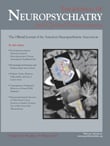CLINICAL RESEARCH REPORTSFull Access
Published Online:1 Jan 2010
- Cited by
- 3 November 2023 | Perceptual and Motor Skills, Vol. 130, No. 6
Metrics
History
Published online 1 January 2010
Published in print 1 January 2010



